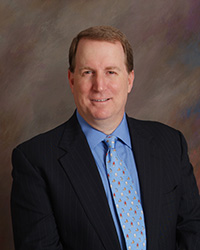The modern blending of our workforce including the use of remote flex and gig workers requires examination of HR’s Service Delivery approach.
BY: Bob Greene, Senior HR Industry Analyst, Ascentis
The fundamental changes to the American workforce seen over the past several years are forcing a paradigm shift in how HR professionals go about interacting with employees. The specific human capital management technologies which HR teams use to accomplish this management and communication are referred to as HR Service Delivery (HRSD) and has never before been challenged with as much variability in target audience as it is today.
Consider the breadth of these variables:
These are a few of the classifications businesses apply to their associates, and all have implications for what and how they communicate with them and the way that they receive needed information. Simply put, for the vast majority of employers the days of communicating with employees by gathering around the office cooler, posting notices on the bulletin board, and dropping by the HR Department to pick up the forms are LONG gone.

As workforces become more diverse it becomes increasingly difficult to push a legacy set of standalone payroll and HR services to workers.
As HR teams address the service delivery needs of blended workforces of increasing dimensionality, one of the most effective approaches is to reduce the number of point solutions being used to manage functionality and migrate to an integrated suite solution.
For example, in 2013, Acme Industries had 300 associates, all direct employees, hourly or salaried exempt, and working in the United States. They had a mix of HCM applications, including an on-premise solution for HR recordkeeping, benefits plan enrollment through their health insurer’s site, a payroll service bureau, PC-based time & attendance software, a freeware employee engagement survey capability, a cloud-based applicant tracking system, and a web-based collaborative platform for rudimentary employee and manager self-service functions, forms and policy dissemination and organizational announcements.
A few of these systems were interfaced, but single sign-on to multiple applications was only a fond future dream. Still, as of 2013, this combination of technology had stood for years and Acme was never motivated to upgrade it.
By late 2019, Acme had grown both organically and through a series of small acquisitions, to 850 employees. They have full time, part time and variable hour employees in the U.S., Canada, and Brazil. They make liberal use of contingent workers and 28% of their regular workers are now remote (home office-based). One of their recent acquisitions added 70 employees who work for weeks at a time on oil rigs in the Gulf of Mexico.
As Acme grew, in size and organizational complexity, it became painfully obvious to both HR leadership and their top management corporate-wide, that a combination of point solutions, a high degree of data duplication due to minimal data integration, lack of a single self-service interface, and the inability for some remote, non-U.S. or offshore employees to even access all systems when they needed them, brought the situation to a breaking point. Acme embarked on a search for a full-suite HCM solution with complete mobile access on any device of the associates’ choice.
The increased dimensionality of blending of any given workforce is not, in and of itself, an impediment to HR Service Delivery optimization. But consider these examples of staffing growth and the impact they have on a typical organization’s HR Service Delivery approaches:
Bottom line, as blended workforces become more and more diverse, it becomes more difficult to push a legacy set of standalone HR, payroll, talent management, and workforce management applications to meet evolving requirements. The modern blending of our workforce frequently requires reexamination of an organization’s HR Service Delivery approach.

Bob Greene
Bob Greene currently serves as channels manager and sales trainer at Ascentis. During his 40 years in the human capital management industry, Bob has assisted organizations in a vendor/partner role, as a practitioner, and as consultant, using the latest software and service solutions for HRMS, payroll, and benefits system design as well as acquisition strategies.
Contact:
Website: www.ascentis.com
Email: bob.greene@ascentis.com
Postscript: As this article was being written, the spread of the coronavirus (COVID-19) was declared a pandemic. In response, many employers were encouraging, or in some cases requiring, employees to work remotely. Many of these employees might be doing so for the first time. These employees may require a level of support from their employers to adjust to the changed routine of interacting with their offices, as well as the changes to certain HR, time and payroll functions they previously performed only from the office. Going forward from this experience, many employers will have a new appreciation of the flexibility they need to offer in HR Service Delivery functions.
Scott Ellyson, CEO of East West Manufacturing, brings decades of global manufacturing and supply chain leadership to the conversation. In this episode, he shares practical insights on scaling operations, navigating complexity, and building resilient manufacturing networks in an increasingly connected world.